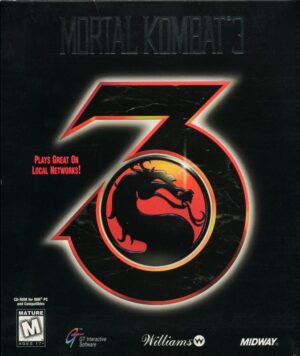Retro Replay Review
Gameplay
Castlevania: The Adventure distills the series’ signature whip-based combat into a streamlined portable experience. You play as Christopher Belmont, armed only with the Mystic Whip, which acts as both your primary weapon and your means of interacting with the environment. Every enemy encounter and candle-smashing moment calls for precise timing, since your whip’s reach and swing speed are your only tools against the undead horrors that stand between you and Dracula’s castle.
The game is organized into four distinct dungeons—ranging from dank crypts to torchlit chambers—each culminating in a “Primary Evil” boss fight. These bosses demand careful observation of attack patterns. Learning to anticipate their moves and positioning Christopher correctly becomes critical, especially when your health meter is slim and continues to carry over from room to room. There’s no mid-level save, so every jump, attack, and dodge feels weighty and consequential.
Between enemies, you’ll smash candles and breakable objects to reveal hearts (which power sub-weapons), crystals (which level up your whip), and golden crosses (which grant temporary invincibility). Managing these pickups is fundamental to survival; hearts are scarce, and without them, you can’t unleash the Cross or other sub-weapons. The risk-versus-reward cycle of clearing rooms quickly versus methodically searching for items keeps each run tense and engaging.
Graphics
On the original Game Boy hardware, Castlevania: The Adventure pushes the monochrome palette to its limits. Character sprites are surprisingly detailed for a handheld of its era: Christopher’s silhouette is instantly recognizable, and enemy designs—skeletons, bats, and gargoyles—come to life with fluid animations that belie the system’s technical constraints. Boss characters stand out with slightly larger sprites and exaggerated movements, ensuring that each battle feels unique.
The level backgrounds maintain a gothic flair despite the two-shade display. Crumbling walls, flickering torches, and ominous arches convey the oppressive atmosphere of Dracula’s domain. Though the scenery repeats across stages more than in home console entries, subtle variations in platform layouts, ceiling heights, and decorative motifs help differentiate each dungeon’s theme.
Occasional sprite flicker and slowdown crop up when rooms fill with projectiles or multiple enemies, but this quirk can also be seen as part of the game’s charm. The trade-off for this minor technical hiccup is a consistently clear visual presentation—characters and hazards remain distinguishable, which is vital for a game that demands pixel-precise jumps and whip strikes.
Story
The narrative premise is classic Castlevania: Dracula has risen again, thirsting not only for blood but for vengeance. You step into the shoes of Christopher Belmont, tasked with descending through four increasingly perilous levels to confront the dark lord. While the dialogue is minimal—limited to title screens and brief cutscenes—the mood is palpable, driven by haunting music cues and moody level designs.
Each dungeon represents a step deeper into the heart of darkness, echoing the series’ longstanding theme of a lone vampire hunter delving into evil’s lair. The simplicity of the storyline works in the game’s favor on a portable system: it keeps the focus squarely on gameplay while still providing motivation and context for your relentless advance.
Defeating each Primary Evil builds anticipation for the final showdown with Dracula himself. Though the backstory doesn’t branch or develop through dialogue, collectibles like crystals that power up your whip serve as narrative stand-ins, symbolizing Christopher’s growing strength. By the time you reach the final chamber, the stripped-down plot feels appropriate, letting the tension of your journey carry the emotional weight.
Overall Experience
Castlevania: The Adventure remains an atemporal challenge for fans of classic platformers. Its tight controls and unforgiving difficulty curve create a rewarding sense of mastery. Though modern players may chafe at its lack of saving or password systems, the high-stakes structure amplifies each moment of progress, making every boss defeat feel genuinely triumphant.
As a portable entry in the Castlevania canon, the game forges an impressive balance between accessibility and depth. Newcomers can appreciate its straightforward design, while series veterans will recognize the hallmarks of Konami’s enduring formula. Replaying levels to perfect routes and maximize whip upgrades provides a satisfying loop that prolongs the game’s lifespan beyond its brief four-stage length.
Ultimately, Castlevania: The Adventure offers a concentrated dose of gothic action that’s ideal for on-the-go gaming. Its atmospheric graphics, memorable soundtrack, and whip-centered combat deliver a cohesive package that still resonates decades after its release. For collectors and retro enthusiasts, it stands as a testament to how handheld hardware can carry the spirit of a beloved franchise without compromise.
 Retro Replay Retro Replay gaming reviews, news, emulation, geek stuff and more!
Retro Replay Retro Replay gaming reviews, news, emulation, geek stuff and more!









Reviews
There are no reviews yet.